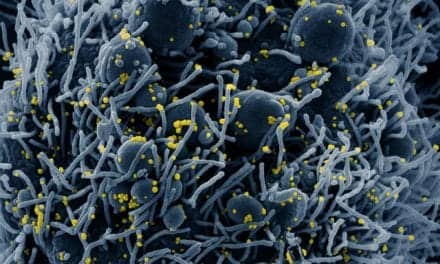Editor’s note: This article has been updated to account for newly published data on Feb 13 9:00am Beijing Time (UTC+8) that reported a 15,000 increase in coronavirus cases in 24 hours.
The number of coronavirus infections spiked by 15,000 cases in 24 hours, from 45,171 total cases as of Feb 12 to 60,239 total cases on Feb 13 (a 33.4% jump), according to data from Johns Hopkins University.
According the same data, the death toll from the virus jumped by 249 people (22.3%) in the same time period (1,118 people total as of Feb 12 to 1,367 people total as of Feb 13). All but two of the deaths have been in mainland China.
According to The New York Times, the surge in confirmed cases has been at least partially attributed to changes in diagnostic methods in Hubei province, which is now including doctor-confirmed diagnoses with the standard test kit-confirmed diagnoses. The test kits are in short supply and suspected cases are going untested, The Times reported.
On Monday, the United States confirmed its 13th case of 2019-nCoV coronavirus in a patient who had been evacuated by the US government from Wuhan, China to Marine Corps Air Station Miramar in San Diego.
During his mandatory 14-day quarantine, the man had been mistakenly cleared due to a lab error, CNBC reports. But researchers later realized the mistake and since then he has been transferred to UC San Diego Health facility for observation and treatment.
On Tuesday the World Health Organization renamed the virus COVID-19, for COrona VIrus Disease 2019 (when it originated). According to the WHO Director General, Dr Tedros Adhanom Ghebreyesus, the name will allow for standardization while not stigmatizing any geographic regions.
“Under agreed guidelines…we had to find a name that did not refer to a geographical location, an animal, an individual or group of people, and which is also pronounceable and related to the disease. Having a name matters to prevent the use of other names that can be inaccurate or stigmatizing. It also gives us a standard format to use for any future coronavirus outbreaks,” Ghebreyesus said in a media briefing.
According to Ghebreyesus, WHO has called for $675 million for preparedness and response operations to the virus. “If we invest now in rational and evidence-based interventions, we have a realistic chance of stopping this outbreak,” he said.
“You strike hard when the window of opportunity is there. That’s what we’re saying to the rest of the world. Let’s be serious in using the window of opportunity we have. … If we don’t, we could have far more cases – and far higher costs – on our hands. I don’t think anybody wants that,” he added.
“This is a common enemy.”
Photo credit: CDC’s Public Health Image Library. PHIL ID #23313.
This illustration, created at the Centers for Disease Control and Prevention (CDC), reveals ultrastructural morphology exhibited by the 2019 Novel Coronavirus (2019-nCoV). Note the spikes that adorn the outer surface of the virus, which impart the look of a corona surrounding the virion, when viewed electron microscopically.










